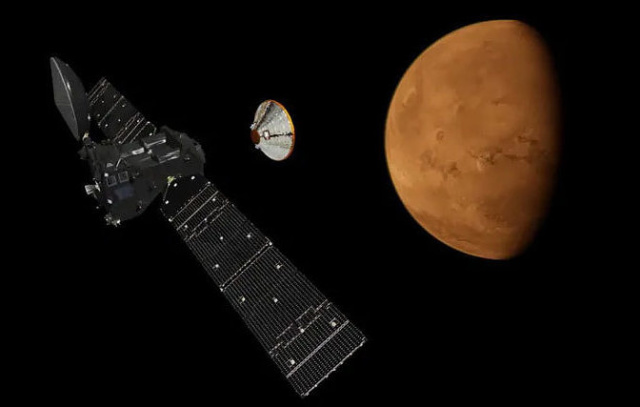This makes even more mysterious the results of measurements of the Curiosity rover, which in the summer of 2019 discovered methane emissions in the Gale crater
TASS, July 22. The ExoMars-TGO space probe did not find even minimal traces of methane, phosphine and other substances in the Martian atmosphere that can indicate the presence of Earth-type life. The European Space Agency (ESA) writes about this on its website.
"We have been observing the concentration of methane in the Martian atmosphere for almost one and a half Martian years (2.7 Earth years-approx. TASS). So far, we have not been able to detect any traces of it, which means that its share in the atmosphere is even lower than our first measurements indicate," said Franck Montmessin, one of the authors of the study, a researcher at the University of Paris - Saclay.
The ExoMars-TGO mission has been studying the Martian atmosphere for three years. One of its main tasks is to assess the concentration of methane in the Martian atmosphere and look for its possible sources, as well as many other gases.
During the first full year of operation, the ExoMars-TGO instruments did not detect any traces of methane in the Martian atmosphere, despite the fact that at the same time the Curiosity rover recorded the release of this gas in the Gale Crater.
Monmessin and his colleagues continued their observations. They tracked the concentrations of methane, ethane, ethylene and phosphine, which can be produced by terrestrial microbes or their Martian counterparts. These searches ended unsuccessfully - the probe's ultra-sensitive sensors failed to detect any significant amounts of all four gases.
In the case of methane, this means that its concentration in the Martian atmosphere cannot exceed 0.02 parts per million, which is several orders of magnitude less than the values obtained by the Curiosity rover during methane emissions in the summer of 2019. Almost the same low values, about 0.1-0.7 parts per billion, were recorded by scientists during the first observations of the concentrations of ethane and ethylene, as well as phosphine.
Such low concentrations of these gases in the air of Mars indicate that if they are released into its atmosphere, it happens accidentally and in extremely small quantities. One of the reasons for this is that the European NoMAD instrument installed on board the probe has not found a single point source of methane emissions on the planet's surface for two thousand attempts to detect them.
Such discoveries, according to Monmessin and his colleagues, deepen the mystery of detecting methane emissions by the Curiosity rover. Scientists hope that sending the European rover Rosalind Franklin and the Russian landing platform Kazachok to Mars will help find the first explanations for the existence of this anomaly in the next one or two years.

